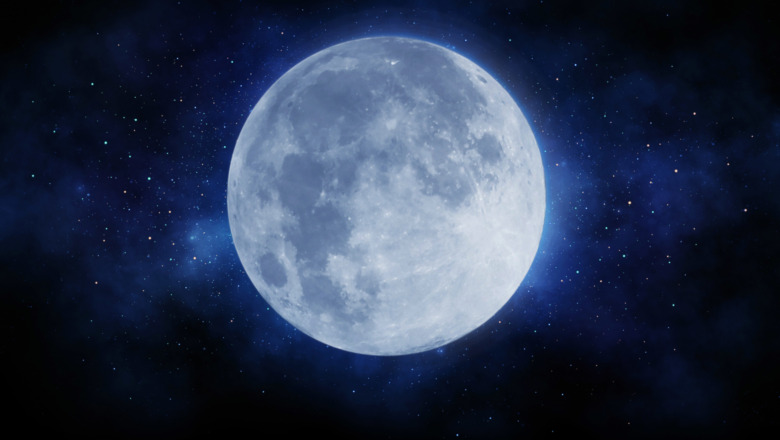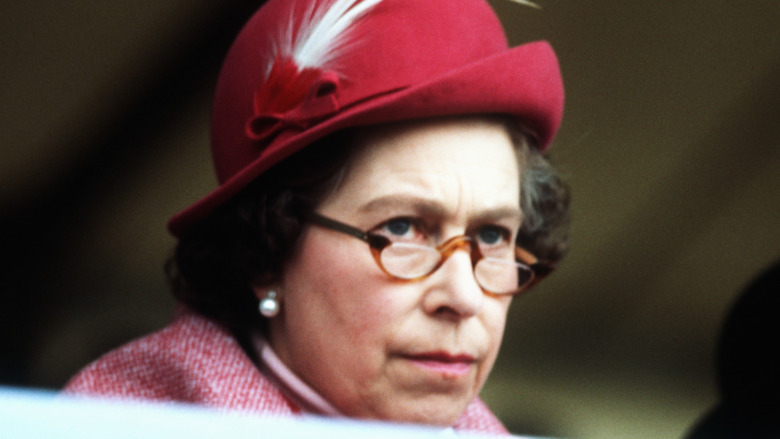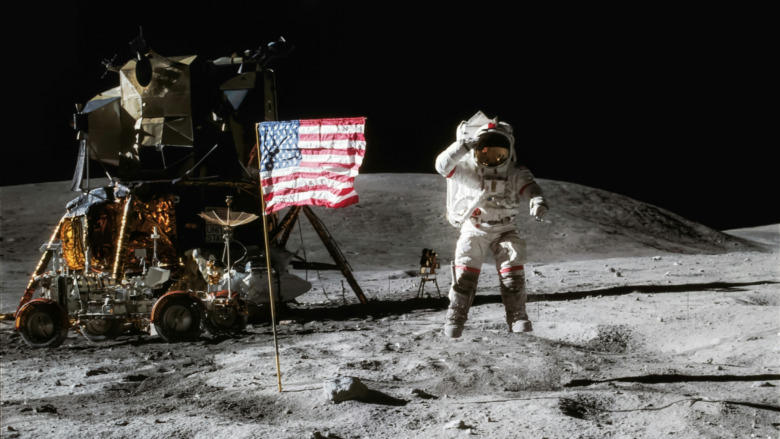This Was The Message Queen Elizabeth Sent To The Moon
Before NASA sent Neil Armstrong, Buzz Aldrin, and Michael Collins to the moon on Apollo 13, the agency asked heads of state of various countries around the world to compose messages to send up there. In response, 72 politicians and figureheads penned platitudes, which were then placed on a silicon disc to be delivered to the satellite's surface by Armstrong and Aldrin, according to The Guardian. One of those messages was from none other than Queen Elizabeth II, who was at the time (and remains) the ceremonial Head of State of the United Kingdom.
Many of the messages sent by her colleagues are considerably longer than the Queen's. For example, according to NASA, Belgium's King (at the time) sent five paragraphs. Costa Rica's president practically wrote a novella, as did the prime minister of Guyana.
The Queen's missive, however, was downright terse. This is the message Queen Elizabeth sent to the moon.
Queen Elizabeth just wasn't feeling it
Her Majesty's message was brief, precise, and to the point: "On behalf of the British people I salute the skill and courage which have brought man to the moon. May this endeavour increase the knowledge and well-being of mankind," she wrote, signing it "Elizabeth R," where "R" means "regnant" — in other words, "Elizabeth, the Reigning Queen."
So why was the Queen's message commemorating one of the greatest scientific achievements in history so laconic? According to The Guardian, she thought the idea of sending a message a "gimmick."
"Her Majesty agrees that this idea is a gimmick and it is not the sort of thing she much enjoys doing," her private secretary at the time wrote, adding the caveat that to not write a message would appear "churlish," a sentiment with which the Queen purportedly agreed.
Meanwhile, the British government wanted to avoid the appearance of pettiness. John Graham, principal private secretary to the then-foreign secretary, Michael Stewart, also used the word "churlish" to describe the prospect of declining NASA's invitation to send a message.
The British government wrestled with Britain's place in the moon landing narrative
Queen Elizabeth's reluctance to commit to sending a message to the moon with the Apollo 11 astronauts was part of a larger matter — the British government wrestling with where it fit into the narrative of the history of exploring the moon.
For example, then-Prime Minister Harold Wilson wondered with whether or not Britain's "modest" contributions to the U.S. space program, which included rocket designs and aspects of the astronauts' space suits, among others, should be included in his address to the nation marking the historic moon landing. In the end, Downing Street decided that the British contributions, though "not insignificant," shouldn't be mentioned in the Prime Minister's broadcast, according to The Guardian.
Some time after the Apollo astronauts returned, NASA presented the British government with four pieces of moon dust encased in plastic and mounted in a display, complete with a British flag. The artifact eventually wound up in a forgotten-about cabinet in the Prime Minister's residence, with at least one British museum declining an offer to keep and display it.


